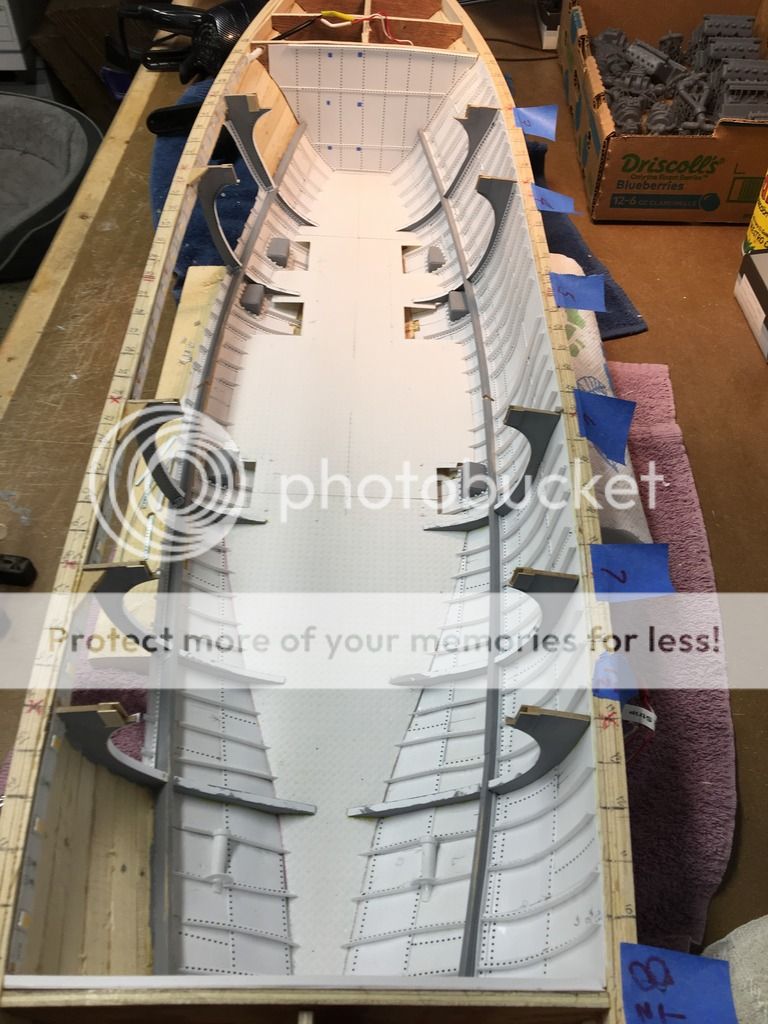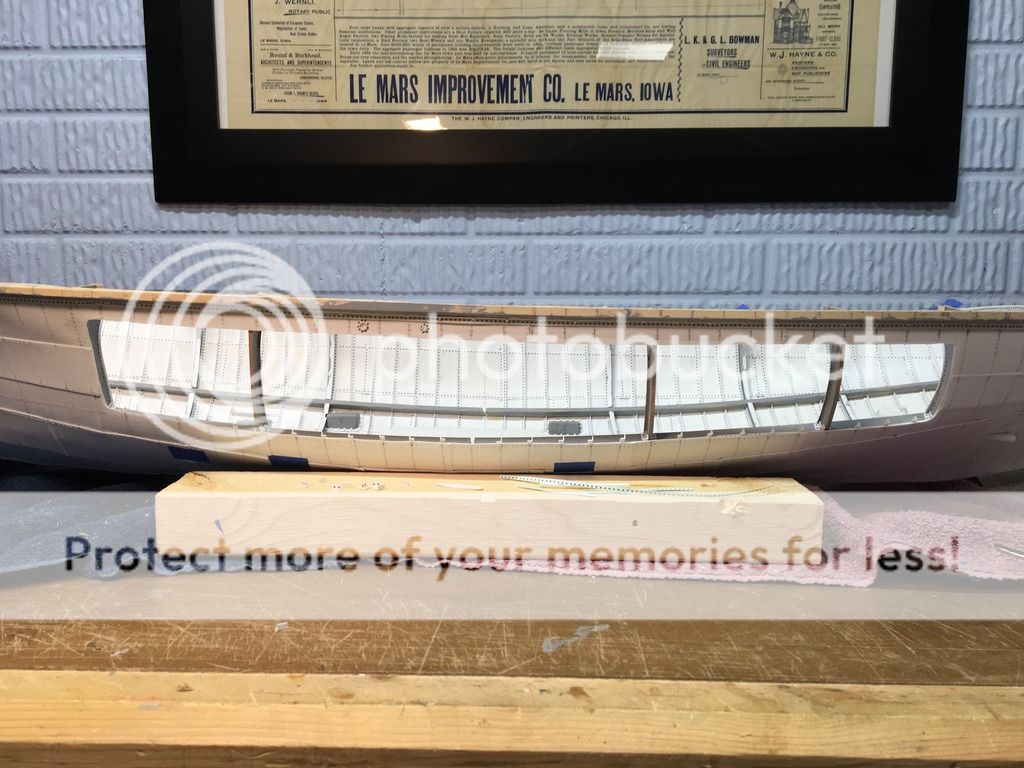OK I'll look at a different picture hosting site. I am compiling an album in Google Photos of this project. Not sure if there is a way to allow FSM members to view. I'm not interested in paying for a hosting site so cheap/free comes with baggage. What is everyone else using??
Here are a couple pics of my model, so far. Keep in mind a lot of painting is coming real soon and will make a huge change...
This boat has three hull frame sizes. The 'Small' frames, the majority, are basically 3" angle iron. This is 1/8" Evergreen Styrene heated and bent in a mold. Frame spacing is about 18". The Intermediate frames are the angel iron with additional plating and angle iron riveted to them forming a 'C' channel. For this I'm using 1/16" birch ply to get the bulk. The port side of the boat has the viewing port/opening. You will see some wood and unfinished areas on the port side above the fore/aft stringer. Since these areas will not be visable through the view port I did not finish it. If you noticed wires ahead of the forward bulkhead I am lighting the boat. Just above the view port is an LED light strip to illuminate the interior. In addition I will be running wiring for navigation lights and perhaps flood lighting on the tower and illuminating pilot house. Also in the photo are openings in the lower deck. This is where the pumps will go and connect to the sea chests in the hull. The heavy midship frame is missing in this photo. If you look to the upper right of the boat in the picture yo can get a view of all the 3D printed parts, engines, pumps, monitors and valves.
This is the view from the aft bulkhead looking forward.

I am working on the 'heavy' midships frame now and will have it installed tomorrow.
Here is a picture from the outside of the boat looking at the port side. I have an opening in the hull from just above fore/aft stringer to just under the upper fender and just inside the fore and aft bulkheads. From this view you can see the small and intermediate frames and all the Archer Transfer rivets (black dots) throughout the hull interior.

If you can zoom in on the hull you will see the simulated flat rivets on the outside. So far just north of 300 hours in the hull. I cheated a bit and formed a thin wood 'shell' over bulkheads to give me a base to glue the .5 mm Evergreen styrene sheets too (the hull plating). So the thickness of the hull is not quite right. But who will know??
The period that my father served on the boat was during WWII. The boat was stationed in San Pedro harbor, the port to Los Angles. Next door is Long Beech and the US Naval Yard. Because of this the fire boat was under US Navy command and was painted the traditional battleship colors as well as assigned a USN hull number. So I will be modeling the boat in this state, quite different that typical red and white colors of a fire boat.
I'm really please at how this is turning out. I estimate it will take about 1,000 hours total to complete. I've been researching this boat since last summer including a site visit and started construction in early March. My goal is to have it done by next May and take it to a model boat exibition and show in Manitowoc, Wisconsin, then a road trip to LA after that. My wife just shakes her head and I don't dare tell her how much I have invested in it!!